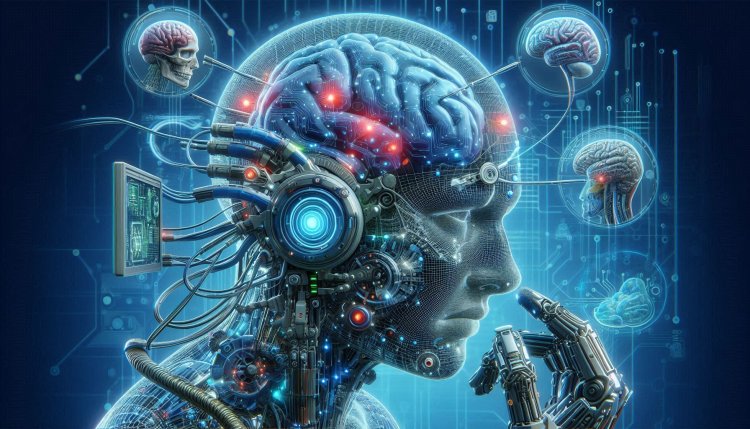Brain-Computer Interfaces: Merging Minds and Machines
Discover how brain-computer interfaces merge minds and machines, revolutionizing technology and healthcare. Explore the future of human-computer interaction.

Brain-Computer Interfaces: Merging Minds and Machines
In recent years, the field of brain-computer interfaces (BCIs) has seen significant advancements, bringing us closer to a world where humans can interact with machines using only their thoughts. BCIs hold immense potential for a wide range of applications, from healthcare to gaming to communication.
Understanding Brain-Computer Interfaces
A brain-computer interface is a technology that enables direct communication between the brain and an external device, such as a computer or prosthetic limb. This communication can be achieved through various methods, including invasive techniques that involve implanting electrodes into the brain or non-invasive techniques that use sensors placed on the scalp.
BCIs work by detecting and interpreting the brain's electrical activity, allowing users to control devices or applications through their thoughts. This opens up a world of possibilities for individuals with physical disabilities, as BCIs can help them regain mobility and independence.
Applications of Brain-Computer Interfaces
One of the most promising applications of BCIs is in the field of healthcare. BCIs can be used to help individuals with paralysis or motor impairments regain control of their movements. For example, BCIs can be used to control robotic limbs or exoskeletons, allowing users to perform tasks that were previously impossible for them.
BCIs also hold great potential in the field of neurorehabilitation, where they can be used to help patients recover from strokes or other neurological conditions. By providing real-time feedback and personalized training programs, BCIs can help individuals improve their motor skills and cognitive functions.
Another exciting application of BCIs is in the field of gaming and entertainment. BCIs can be used to create immersive gaming experiences where players can control characters or interact with the virtual environment using only their thoughts. This technology has the potential to revolutionize the gaming industry and provide new ways for people to engage with digital content.
Challenges and Future Directions
While BCIs hold immense promise, there are still significant challenges that need to be addressed. One major challenge is the development of more reliable and user-friendly BCI systems. Current BCIs can be complex and cumbersome to use, limiting their widespread adoption.
Another challenge is the need for better understanding of the brain and how it interacts with external devices. As our knowledge of the brain continues to grow, we will be able to design more effective BCIs that can provide seamless communication between the brain and machines.
Despite these challenges, the future of BCIs looks bright. Researchers are constantly working on developing new technologies and improving existing ones to make BCIs more accessible and user-friendly. With continued advancements in the field, we can expect to see BCIs playing a larger role in our daily lives in the years to come.
Conclusion
Brain-computer interfaces have the potential to revolutionize the way we interact with technology and each other. By merging minds and machines, BCIs can open up new possibilities for individuals with disabilities, enhance our gaming and entertainment experiences, and improve our overall quality of life.
As researchers continue to push the boundaries of what is possible with BCIs, we can look forward to a future where the line between the human brain and artificial intelligence becomes increasingly blurred. The merging of minds and machines through BCIs represents a new frontier in technology, with endless possibilities for innovation and discovery.
What's Your Reaction?

















